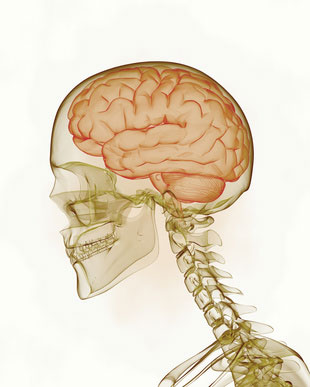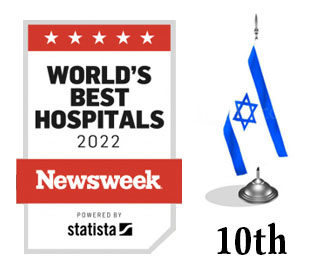Clinics of the Neurology Department
Epilepsy Treatment and the Institute of EEG
The Clinic for Epilepsy Treatment is dedicated to providing the most effective, state-of-the-art treatments to patients suffering from epileptic seizures. The attending clinic team includes experienced physicians and specialists in Epileptology, treatment of epilepsy.
Epilepsy is a brain disorder characterized by bouts of the motor, autonomic and cognitive function disorder, as well as functional disorders of the senses. Epilepsy is one of the most common neurological diseases. About one in 200 people suffers from this disease. Epilepsy is characterized by recurrent attacks, though disease manifestations vary from patient to patient, ranging from a short "switch off" or the appearance of unusual sensations (aura) for a few seconds while maintaining consciousness, to unconsciousness accompanied by a fall. During an attack the patient may experience general convulsions, cyanosis, tongue bite, and loss of control over the sphincters. Common to all these attacks are hyper synchronic violations in the electrical activity in part or all of the cerebral cortex.

The Clinic for Epilepsy Treatment carries out a diagnostic examination of patients, suffering from suspected epileptic seizures. Clinical trials and various tools used in the clinic help to diagnose epilepsy, determine the form of the disease and the nature of the convulsions, to assess the symptoms, and to find out the cause of the disease.
Most of the diagnostic studies are performed at the Institute of EEG in the Clinic. One of the methods to examine the electrical activity and irregularities of the cerebral cortex is electroencephalography (EEG), which helps diagnose the epileptic syndromes and identifies the foci, causing epileptic seizures. EEGs are highly effective for diagnosing and treating epilepsy. Usually during the EEG the patient undergoes additional diagnostic manipulations, such as a flickering light and hyperventilation, which affect the electrical activity of the cerebral cortex and can trigger epileptic effects in key brain regions.
Clinic for Treatment of Neuromuscular Diseases
With the help of the most modern equipment, this institution diagnoses and treats diseases of the peripheral nerves and neuromuscular diseases. One of the advanced diagnostic techniques used here is electromyography (EMG), which records the electrical activity (biopotential) of skeletal muscles in order to detect lesions in the neuromuscular system. This state-of-the-art equipment enables extremely sensitive tests, including a unique test even of a single muscle fiber (SFEMG). EMG studies can diagnose myasthenia gravis (muscle weakness) and other neuromuscular diseases in much earlier stages than were previously possible. For the treatment of muscle spasms and involuntary movements of the face and neck, or in cases of severe spastic muscle contractions, the clinic also applies botulinum toxin (Botox) in very small doses.
Clinic for Treatment of Strokes
A stroke is an interruption of blood supply to the brain that occurs when a blood vessel in the brain is blocked or bursts open. The Clinic for Treatment of Strokes is equipped with modern devices that enable physicians to perform complex monitoring of cerebral blood flow with the help of sound waves, thus, allowing us to respond to changes rapidly. The multidisciplinary clinic staff includes experienced professionals, who have achieved a deep specialization in treating strokes.
The Clinic for Treatment of Strokes has been created both to save the lives of the patients, and to significantly reduce the degree of disability caused by a stroke. The earlier the diagnosis, the more likely a patient can achieve an almost full recovery. Until recently there were no effective drugs for treating strokes, in contrast to treatment of heart attacks, which use a variety of tools that can dissolve blood clots and quickly eliminate blockages in blood vessels.
Due to innovative research conducted in recent years, a clotting solvent that works in the vessels of the brain has been found. This drug is most effective if introduced within the first three hours after the onset of stroke symptoms, dramatically reducing damage to the nerve cells of the brain. It is crucial for suspected stroke victims to receive prompt hospitalization and care as soon as possible.
This clotting solvent drug has been used for several years on appropriate patients in the United States. Another group of drugs, called neuroprotectors, has a protective effect on the nerve cells of the brain and can help to reduce the negative effects of strokes.
Clinic for Treatment of Movement Disorders and Parkinson''s Disease
In this clinic, patients suffering from motor disorders and diseases, such as Parkinson''s disease, Huntington''s disease, essential tremor, ataxia, Tourette syndrome, dystonia, chorea, myoclonus, and restless leg syndrome (RLS) are under monitoring and treatment. In cases of hyperactivity (involuntary movements) in the neck and face, the clinic injects botulinum toxin (Botox), which temporarily paralyzes the muscles in the movement location, and helps patients to resume a more normal appearance. The clinic operates Neurosurgery Service, engaged in examination and surgical treatment of patients with functional motor disorders, using pallidotomy and talamotomy, as well as stimulation of parts of the brain with electrodes and implants.
Clinic for Neuroophthalmology
Many neurological diseases are accompanied by visual impairment, and can result in symptoms and signs like damage to the optic nerve, visual field defects, disturbed eye movements, diplopia, involuntary oscillatory eye movements (nystagmus), and changes in the pupil or fundus.
Symptoms like these are often the first manifestation of a neurological disease. The Clinic for Neuroophthalmology performs a detailed analysis of eye movements that make it possible to establish an accurate diagnosis of the disease in comparison to a regular eye-check. The Clinic has also succeeded in observing patients with diseases such as increased intracranial pressure (especially in the case of Pseudotumor cerebri), myasthenia gravis, ptosis, diplopia, and visual field defects.
At the Department of Neurology, the following diagnostic tests may also be used:
- CT - ultrasound of the brain;
- MRI - Magnetic resonance imaging: a tomographic method for studying the internal organs and tissues;
- Angiography – a contrast radiographic examination of the brain blood vessels;
- EEG - electroencephalogram patterns in the electrical activity of the brain;
- Doppler - the study of blood vessels;
- Laboratory studies of the cerebrospinal fluid and blood.
IMT - Intima-Media Thickness
Intima-Media Thickness (IMT) is an accurate and very reliable method to monitor changes in the thickness of the carotid arteries that supply blood to the brain. It is used to trace the development of early atherosclerosis, so that physicians can promptly implement the necessary measures to reverse any dangerous developments. IMT is a semi-automatic, computerized procedure performed using a sensor that scans sound reflections from the walls of the arteries and provides highly accurate results.
If thickening is found in the walls of the carotid artery, the physician may decide either in favor of arterial reinforcement or prophylactic treatment. This procedure is carried out in the Neurovascular Laboratory of the Center for Brain Research.




